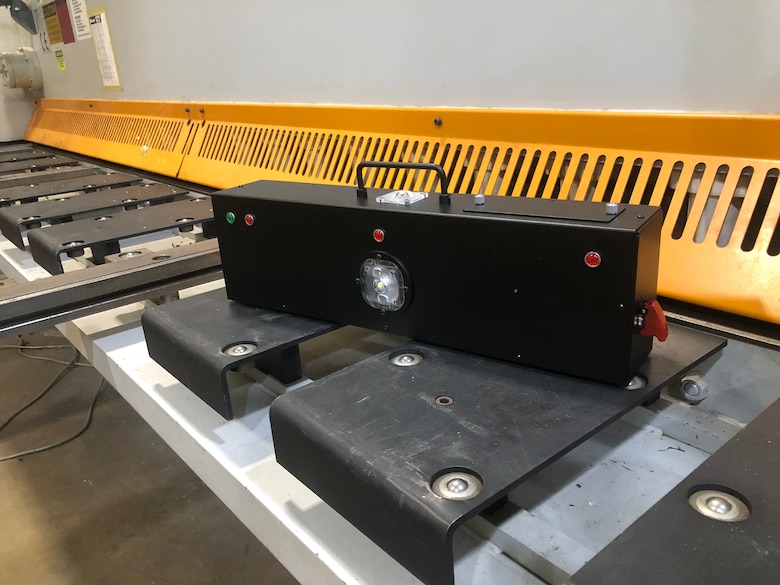A collaborative effort of the 502nd Trainer Development Squadron and Air Education and Training Command Aerospace Physiology Lead Command, the unaided night vision trainer, also known as an NV light bar, demonstrates how dark adaptation and various types of lighting enhance unaided night vision.
The Air Force has been working with a night vision box/light bar for more than 30 years, but these devices were permanently affixed to classrooms and over time have broken or no longer work, said Senior Master Sgt. Ismael Paez Jr., AETC aerospace physiology functional manager.
"The device the 502nd TDS is developing for us is bringing us into the 21st century," he said. "This device will be mobile, can be controlled via remote and can operate on batteries."
The aerospace physiology career field has a waiver in place to forgo the requirement to use the night vision device while ensuring training objectives are met, Paez said, but that will change with the new device.
"Once the new night vision light bar is produced, we'll go from having a handful of legacy devices to more than 40 devices across the Air Force," he said.
Work on the unaided NV trainer began a few years ago in response to a request from an aerospace physiology technician and aerospace physiology training systems program manager, said Josh Chesney, 502nd TDS program manager.
"The current training is done in a classroom setting with a projector and PowerPoint presentation," he said. "This device will provide more realistic training."
The training teaches students about the limitations of the human visual system under low lighting conditions and the illusions they may experience under those conditions.
A rectangular black box that works in tandem with a remote control, the NV light bar demonstrates a variety of anomalies that challenge aircrews.
One of these is autokinesis, a nighttime visual illusion that causes a stationary light to appear to move.
The demonstration of this illusion helps fliers recognize the causes, effects and appropriate prevention of autokinesis during flight, free fall and while under canopy.
The instructor turns on a single red light in the middle of the NV trainer and students stare at a single, fixed light for a minimum of eight to 10 seconds to experience the illusion of an erratically moving light, which is the autokinetic phenomenon.
Next, the instructor turns off the single red light and turns on the outer two red lights of the trainer, and students stare between the two lights for eight to 10 seconds, causing the movement of light to increase. When there are up to four lights with little to no visual references, the illusion increases.
Students learn to avoid autokinesis illusions by concentrating on a single light while maintaining it in their peripheral vision, a technique called nighttime scanning.
Other anomalies the NV trainer addresses are the Purkinje shift, which is the tendency of the eye to shift toward the blue end of the color spectrum at low illumination levels as part of dark adaptation, and flash blindness.
During the flash-blindness demonstration, instructors explain to aircrew and parachutists that their eyes perceive afterimages following glare exposure, which affect their vision for different lengths of time, and tell them how to compensate for these "whiteout" afterimages.
Use of the unaided NV trainer in aerospace physiology classes helps aircrew and parachutists develop their inherent visual abilities to the greatest possible degree, Paez said.
"Although the ability to see at night varies from person to person, experience shows that most people never learn to use their night vision efficiently," he said. "However, proper training can markedly improve night vision ability. Night vision training improves aircrew attentiveness, scanning techniques and mental interpretation of the images within their eyes."
The training is intended for aircrews with normal but untrained night vision and is not a method of testing night vision abilities, Paez said.
"A trained person with fair vision may see more at night than an untrained person with superior vision," he said.

A collaborative effort of the 502nd Trainer Development Squadron and Air Education and Training Command Aerospace Physiology Lead Command, the unaided night vision trainer, also known as an NV light bar, demonstrates how dark adaptation and various types of lighting enhance unaided night vision. (U.S. Air Force courtesy photo)






